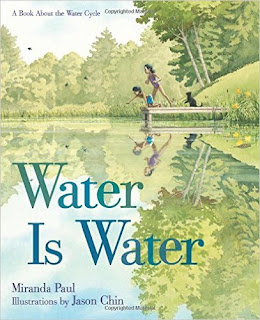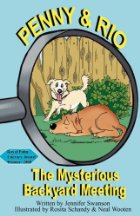By Jennifer Swanson
for Cynthia Leitich Smith's Cynsations
If you’ve been to a bookstore lately, you may have noticed the STEAM-y new trend in nonfiction children’s books.
No, I’m not talking about romance novels, it’s STEAM—Science Technology Engineering Art and Math. From picture books to middle grade, to YA, STEAM topics are hot right now.
The STEAM books can include biographies and histories of scientists, artists, and engineers, but also topics that range from the simple:
Miranda Paul’s book Water is Water (Roaring Brook, 2015). It gives a beautiful and lyrical explanation of the water cycle for young readers.
To the complex:
 Nancy Castaldo’s book, The Story of Seeds: From Mendel's Garden to Your Plate, and How There's More of Less to Eat Around the World on Seeds (Houghton Mifflin, 2016), talks about the genetics of plants.
Nancy Castaldo’s book, The Story of Seeds: From Mendel's Garden to Your Plate, and How There's More of Less to Eat Around the World on Seeds (Houghton Mifflin, 2016), talks about the genetics of plants. And my own Super Gear: Nanotechnology and Sports Team Up (Charlesbridge, 2016) which introduces the reader to the cutting edge science through high performance sports.
So, how do you jump on board this STEAM-y trend?
Here are a few tips:
1. Ask questions like a kid.
Kids are naturally inquisitive. They are always asking how things work, why things happen, and where things come from.
Tap into your kid-side and find a topic that you’re curious about. Then dig deep and look for the cool aspects of it. Kids love trivia. See if you can find something that will make your reader say, “Hmmmm…. I didn’t know that.” Or “Wow! That’s so cool!”
For example: Your brain can store up to 2.5 petabytes of knowledge—That’s like 300 years of T.V. shows!
2. Think like a kid
Kids want to understand so when explaining things, break complex ideas into simple ones. The best way is to use kid-friendly examples, something that taps into the knowledge they have.
For instance, instead of saying something is 10meters tall, say it’s 3 stories high.
One hundred twenty yards becomes as big as a football field.
A nanoparticle is 100,000 times smaller than the edge of a piece of paper.
3. Talk like a kid
Use kid-friendly language. Activate your words! Use short sentences to amp up the excitement or tension. Use longer sentences for explanation to make sure your readers understand the concepts you want to get across. Then mix things up. Put short sentences after long sentences. Add endings like, “Now that’s tiny!” or “Bet you didn’t know that.” It makes your tone more exciting and conversational.
4. Be gross like a kid
Sometimes the best way to capture your reader with science is to gross them out. They are, after all, kids.
For example: Did you know that in one day, your feet can produce more than 1/4th of a gallon of sweat. (P- Ewww!)
5. Tap into a kid’s imagination
Children have very vivid imaginations. By using fun rhyming, rhythmic language, and amazing descriptions, you will grab their attention and get them to think. You can also fill your book with awesome illustrations and photographs to get your reader to visualize what is happening in the book.
Following these tips may help you to STEAM into nonfiction with your own books!
Cynsational Notes
Jennifer Swanson is a self-professed science geek and the author of over twenty-five nonfiction and fiction books for kids. She is the author of Brain Games (NGKids, 2015) and the forthcoming Super Gear. Her book How Hybrid Cars Work (The Child’s World) received a starred review from Booklist and also a Top 10 Books for Youth 2012 Award from Booklist Online.
Several of Jennifer’s other books have received “highly recommended” reviews from the National Science Teacher Association, as well as School Library Journal. Her favorite saying to her students is to “notice the science all around you.” Add a Comment






 Learn more about Kristi Bernard at
Learn more about Kristi Bernard at 